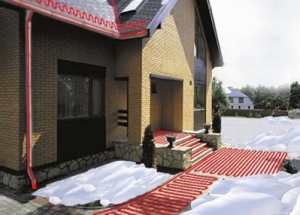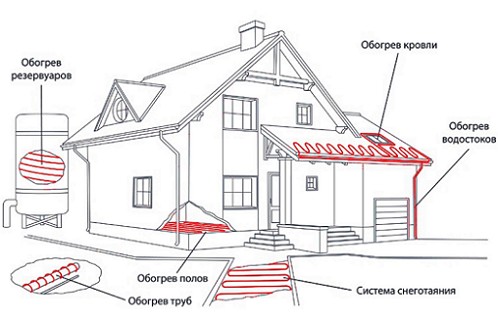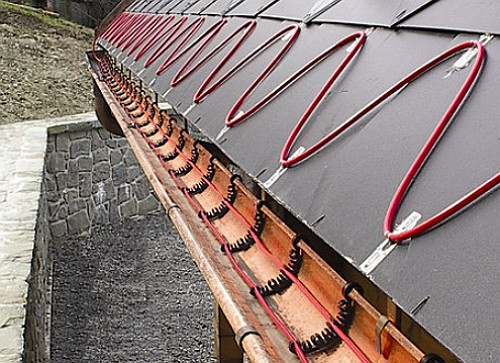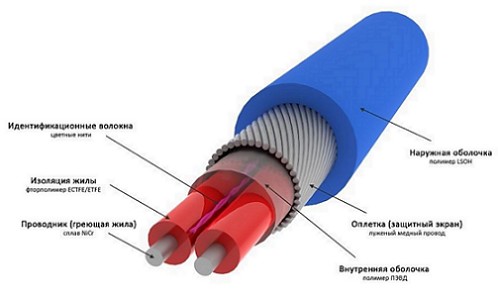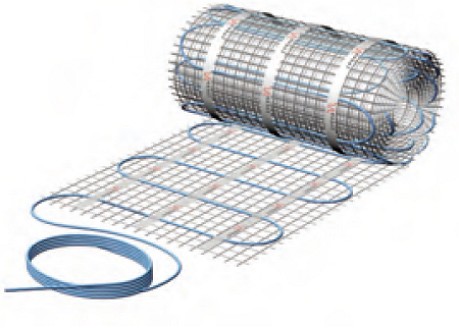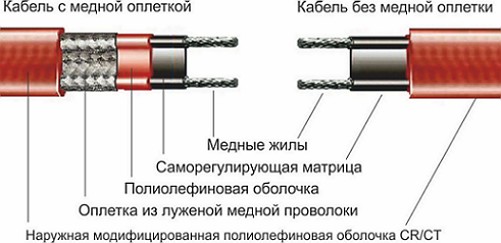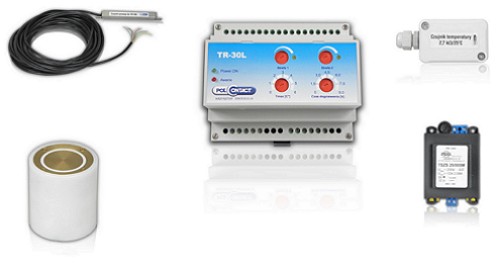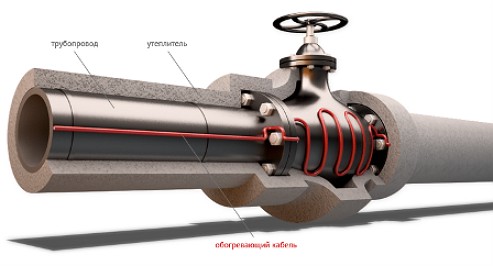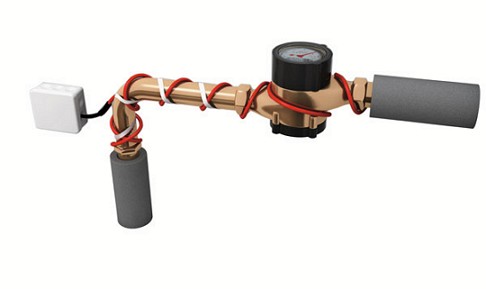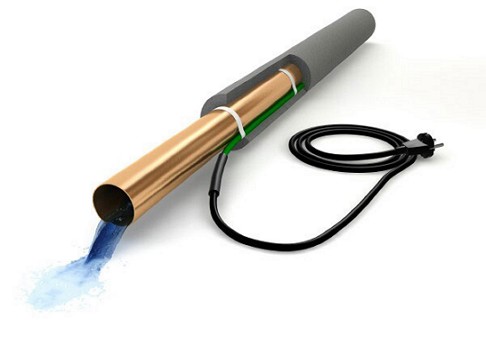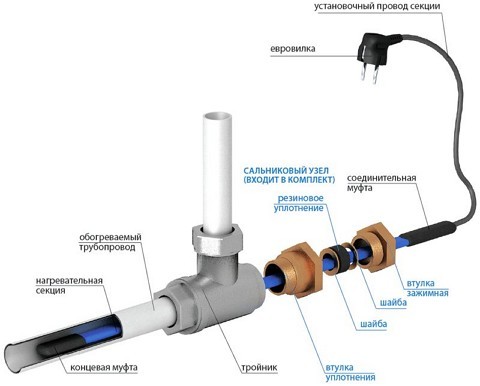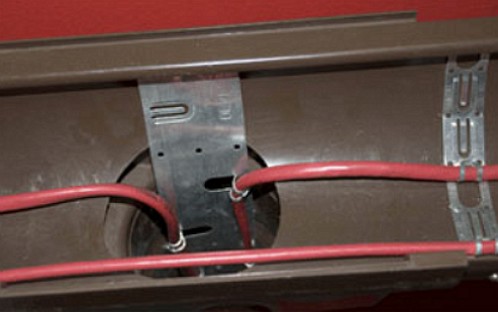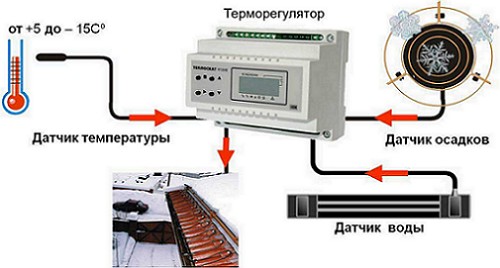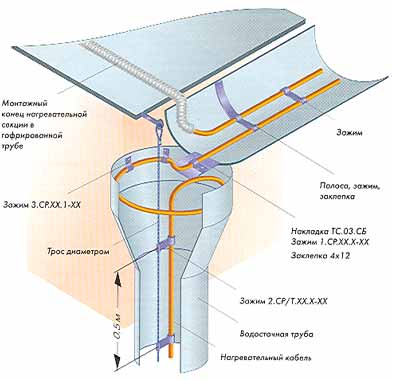More recently, the reluctance to talk about the revolutionary role of cable heating was reluctant. But times are changing, and modern systems of this kind of heating decisively demolish stereotypes. How, have not you used the heating systems of the cable house yet?
Content
The principle of operation and purpose of heating cable
The current and popular heating system of the house elements is currently a cable heating system. The principle of operation of cable heating, made in the form of cable circuits, is the conversion of electrical energy into thermal energy.
Such transformations are carried out due to the directional action of the current in the heating elements. A successful example of using cable heating can be called the "warm floor" system.
But this is by no means the limit: modern cable heating systems allow heating:
• pipes
• roofing
• greenhouses
• drains
• tanks
• Water supply.
The main advantage of cable heating systems is the insignificant cable cross-section, which allows not to increase the overall dimensions of the structures. The main energy source also comes with the use of cables of small cross-section, allowing the installation of the systems with their own hands for a short time.
https://www.youtube.com/watch?v=k8wWwFNNxeQ
And now more about the elements of the cable heating system.
Elements of heating system
No matter how it sounds trite, but the main element of cable heating is the cable.
cable
The following cable types should be distinguished:
• Resistive
• Self-regulating.
Resistive cable represents two metallic conductors of a spiral shape enclosed in an insulation. Resistive cable is manufactured by the industry in the form of lengths, given length and resistance. In the case of a single-wire cable, the installation and connection is made by both ends. A two-wire resistive cable is connected from one end. The conductors at the second end are short-circuited and insulated, thus ensuring the shortest length of the supply cables.
Resistive heating cable is used to provide heating of sections of considerable length.
Advantages of a resistive cable: a small starting current and a low material cost.
The most demanded resistive cable is considered for cable heating of the floor.
Self-regulating cable can be considered an "intelligent" system containing two uninsulated conductors. The conductors are encased in a plastic shell with phenomenal abilities: this is the dependence of the resistance on the temperature of the plastic. This property allows the cable to regulate the heat flow to the outlet at any point in the length of the conductor. Self-regulating cables are already released "programmed" at a certain temperature.
Installation of self-regulating cables is carried out with the use of transient and terminal couplings.
The main advantage of a self-regulating cable is a non-flammable plastic matrix and a long service life.
thermostat for control
Naturally, any cable heating can not be imagined without a system control thermostat. As a result of energy conversion, the resistive cables produce a constant heat output. To obtain the desired temperature during operation, the cables are used in conjunction with sensors and thermostats.
Therefore, depending on the functioning of the system, the sensors and temperature controllers measure the temperature of the ground for cable heating of the greenhouse, air for cable heating of gutters or roofing.
Cable heating pipes
Heating cable system, designed to protect pipes from freezing, is used for the following objects:
• pipelines and water pipes both inside and outside the premises
• Water supply and pipes inside buildings
• underground and surface pipes
• drainage pipes
• sewage.
installation of cable heating outside the pipes
Installation of cable heating of the water pipe is carried out on the surface of the pipe. Fasten the cable using aluminum tape, minimizing and providing little resistance.
To achieve a more significant thermal effect, the cable is wound on a pipe. In this case, it is necessary to make insulation of the heating cable, eliminating the contact. Aluminum scotch is used for these purposes.
installation of cable heating inside pipes
When installing cable heating inside the pipes, the cable is installed directly into the pipeline. Direct entry is a guarantee of preventing freezing of water by direct heating. The cable inside the pipes is made using a sealed input.
Sealed inlet to the pipe is connected by means of a tee, selected depending on the diameter of the pipe. When assembling, use a fitting that tightens the cable tightly, excluding water leakage.
The heating cable system for pipes consists of the following elements:
• control cabinet with wiring components
• Sealed cable entry
• heating cable
• thermostat
• foil scout.
To reduce heat loss, traditional thermal insulation materials are used.
The cable that lives on the roof
Installation of cable heating for ramps and stairs is carried out under cover. But the most demanded was the heating cable for roofs, starting from the overhang of the roof, inside gutters gutters and drainpipes, from snow retention along the entire length and ending with livnovke.
In a similar way, as well as cable heating of drains, heating of the valley, as well as "warm" places adjacent to the walls. Installation and installation of cable heating of the roof is carried out using thermostats or temperature sensors, as well as mini weather stations.
Weather stations can be set up for heating even if there is a risk of icing (temperature from +3 to -12 degrees).
The roof heating system has the following components:
• heating cable
• power supply cable
• connection sleeves for heating cable
• control cabinet equipped with a thermostat
• Fastening mounting elements for cable installation
• wiring components, including end sleeves.
Installation of a heating system for gutters involves selecting the number of heating lines, relative to the width of the gutter and the power of the cable. For installation of heating of drains the self-regulating cable is considered as the most claimed. Heating of the banks is carried out using the installation and installation of up to 4 heating lines for 2/3 of the length of the valley.
Mounting the heating cable involves the use of a mounting cable and tape. Mounting elements are fixed at two points of the heating line: at the top and bottom of the valley.
To the cable heating systems, during installation, there are increased requirements for electrical safety. Therefore, the cable systems have a screen of copper mesh between the insulation of the cores, which must necessarily be grounded.


